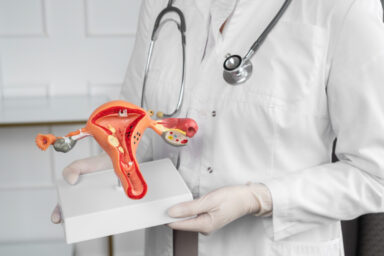General practitioners play a key role in prevention. They are the ones who should identify first risk signs, such as high blood pressure, blood sugar or cholesterol, which indicate the risk of developing and progressing chronic diseases. However, since none of these cause pain and the health literacy of Czechs is not very good, as is well-known, practitioners often have to push the patient towards prevention when they contact them for completely different reasons. Until recently, however, their job was complicated by the fact that once they identified a risk, they had limited treatment options due to prescription restrictions. This is gradually changing, yet there are no calculations in the Czech Republic on how cost-effective it would be to release additional medicinal products to GP practices. The aforementioned was stated by Zdeněk Hamouz from the Association of General Practitioners at the international panel of the Zdravotnický deník Permanent Conference on Czech Healthcare.
„Primary care is absolutely irreplaceable in the field of preventive medicine and is trying to fulfil its role,“ Zdeněk Hamouz says. According to the legislation, practitioners can treat patients in 55 diseases, including obesity, prediabetes, and chronic bronchitis. Of course, if they do not know what to do, they should refer the person to a specialist.
Although practitioners (and doctors in general) play a major role in prevention, they must not be left alone. It is the role of the government to provide resources, to moderate and modulate healthcare or set basic objectives in the design of health programmes. Today, we focus primarily on cancer prevention, as well as on cardiology and diabetes prevention, where practitioners cover a wide field of action. In oncology, for example, there has been a recent expansion in the sense that practitioners can take over the follow-up treatment of patients who have completed their cancer treatment, most often breast cancer patients.

However, the main role of practitioners should be in primary prevention, i.e. in trying to prevent chronic disease from developing. For example, data from various studies on the treatment of hypercholesterolaemia have shown that the older patients begin to be treated for a problem, the earlier they die. The same is true of many other lifestyle diseases.
Late detection equals higher mortality
The trouble is that these patients have no symptoms, so they do not seek doctors. Therefore, as part of preventive check-ups, practitioners test glycaemia, blood pressure or cholesterol to catch in time those at risk of developing a disease. However, as not everyone attends preventive check-ups, practitioners also try to carry out prevention through other contact, i.e. during initial check-ups, when issuing confirmation for a driving licence or work, or when the patient wants a referral to a specialist.
„The problem of preventive medicine is early detection and treatment. If we are not successful in this regard, the disease develops over a longer period, and leads to higher mortality. This applies to all aspects of preventive medicine. To cholesterol, diabetes and glycaemia as well as to hypertension,“ Zdeněk Hamouz emphasises. The results of prevention can be seen very clearly in colorectal cancer, which until recently has been the world’s leading cancer. However, after the introduction of preventive testing for occult bleeding from stools, the figures have improved significantly.
Myocardial infarction, on the other hand, has seen a 13 per cent reduction in cases and a seven per cent reduction in costs over the last ten years. The results are due to improvements in care, lifestyle, or greater wealth in society. However, according to Hamouz, the fact that practitioners were able to start prescribing statins ten years ago also seems to play a role. And while putting in a stent costs around a hundred thousand crowns all-in, a year’s treatment with statins costs 2,500 crowns.
Mohlo by vás zaujímať
„Despite all the hoaxes and rubbish you can read on the web, statins reduce the risk of heart attacks by at least 30 per cent. If a patient has a positive score, which we judge during preventive examinations, he has to be treated,“ Zdeněk Hamouz emphasises.
Fewer prescription restrictions
The range of what practitioners can prescribe plays a significant role in prevention (especially secondary prevention). Meanwhile, prescribing hypolipidaemic ezetimibe was allowed last year and now GPs can also prescribe gliptins for the treatment of diabetes.
„We may not be able to prescribe incretin mimetics, we only can do so with DPP IV inhibitors, but thank goodness for that. However, we may get to glyphlozines in a decade. When I find out a patient has diabetes, I start treatment, and I have the means to do so. But if these medications are no longer enough and I have no other option to prescribe, I have to send them to a diabetologist, which is the end of my role in secondary prevention – and that is not good. I should continue to treat them but I cannot because I cannot get to the medication. We have been fighting for years for some molecules, and eventually changes will happen but there are unnecessary delays,“ says Zdeněk Hamouz, adding that in Germany, for example, a GP can prescribe everything.

According to him, there is no calculation of cost-effectiveness and benefits in our country as of today. „I don’t know anyone who would have calculated it downwards. It always follows the same model – a group of specialists do not want a certain medicine to be prescribed by other specialists, and some think it is expensive. But no one seems to be able to calculate whether it is cost-effective in terms of additional costs and life extension,“ Hamouz points out.
This is where health insurers paying for treatment should play a role but they should also moderate the discussion among different groups of specialists. They should also cooperate with the State Institute for Drug Control (SÚKL), which is entrusted with the lifting of prescription restrictions.
Promoting efficiency is important
The implementation of prevention by GPs may also be constrained by the fact that access to their care in peripheral regions is decreasing. Between 2000 and 2010, hundreds of practitioners in the periphery quit their practices, and some of them have not been replaced. By contrast, Prague added 100 practitioners in that time. „The discrepancy may have adjusted, but there is an irreplaceable role for the health insurance companies. They have to direct doctors to where they are needed, not where they want to go,“ Hamouz believes.
At the same time, providers that are efficient should be supported by payers through programme projects. The General Health Insurance Company has already created the VZP Plus programmes, which allocate bonuses to both primary care physicians and specialists for the proper treatment of patients for diabetes, hypertension or obesity. Thus, if a physician manages to treat their patients so that they have the properly glycated haemoglobin, blood pressure or LDL cholesterol levels, the physician will receive a financial bonus from the insurance company.
„It all comes down to catching risk factors right at the beginning, when the values are still low, and we can influence them well because people have not yet developed atherosclerosis. Then, when they already have diabetes, we just stop it at its heels and wait to see what will happen,“ Zdeněk Hamouz concludes.

Speech by the Slovak Minister of Health, Vladimír Lengvarský. From the right, editor-in-chief of Zdravotnický deník and discussion host, Tomáš Cikrt, President of the Polish Society of Public Health, Head of the Department of Allergology, Lung Diseases and Internal Medicine, Central Clinical Hospital of Ministry of Interior in Warsaw, Andrzej Mariusz Fal, President of the Czech Society for Cardiology, Head of the Department of Cardiology and Angiology, First Medical Faculty of Charles University and General University Hospital in Prague, Aleš Linhart, Director of the General Health Insurance Company, Zdeněk Kabátek, and Head of the National Monitoring Centre for Drugs and Addiction, Viktor Mravčík. Photo: Radek Čepelák
Michaela Koubová











